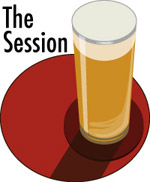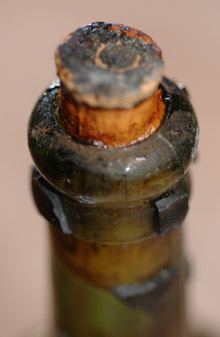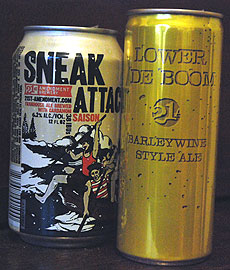I’ve steered clear of the recent “wine-ification” of beer kerfuffle because I don’t have anything to say I haven’t already (New Beer Rule #7: Beer is not the new wine was written back in December of 2007, thus predating about half the breweries in the United States).
But today Mike Veseth, who I’ve mentioned here many times (including about his fine book, Wine Wars, and that he has another, Extreme Wine, on the way) asks the question: Is Craft Beer the Next Big Thing in Wine?
Remember the context and that the discussion revolves around economics. And it pretty much starts with an answer to the question he asks in the headline.
(Yes) — if you are thinking about things in terms of market spaces. The wine market space and that of craft beer are increasingly overlapping as craft beers infringe on wine’s turf (and low alcohol wines threaten to do the same for beer). And if the common battlefield isn’t huge at this point, it is certainly growing and warrants attention.
Much of it won’t appear new if you’ve been reading the beer compared to wine discussion for the past several years. But, you know, not everyone has. So it’s worth taking the time to move from Point A to Point B and so on with him. Words like innovation (“Innovation is a hot topic in the beverage business these days and craft beer presents more opportunities for innovation and product development than most wines if you are aiming at that market segment.”) and complexity are used. It’s interesting to read what somebody who does not live in the beer aisle has to write about beer.
So craft beer has a lot in common with wine and maybe a couple of advantages. With these products more widely available and a growing customer base that is ready and willing to experiment, I think it is plausible and wine and craft beer will increasingly share market space and must take that competition into account.
Something to think about.
And one quick side note:
At the end he suggests that some wineries might start to brew beer. Of course, that’s already happened. There are several wineries across the country who already do brew beer. Notably, in 1997 Korbel Champagne Cellars started Russian River Brewing in northern California and hired Vinnie Cilurzo as brewmaster. Six years later, Korbel decided to get out of the brewing business. Natalie and Vinnie Cilurzo bought the brand and started a brewpub, then a production brewery, in Santa Rosa. Do you think Korbel wishes it could take that decision back?
 Adam at Pints and Pubs has posted the roundup for
Adam at Pints and Pubs has posted the roundup for  See that cork? There was a time, not long before the photo was taken, that the top of the cork and the surrounding glass were dead level.
See that cork? There was a time, not long before the photo was taken, that the top of the cork and the surrounding glass were dead level. See that sleek, gold can on the right that looks like it’s waiting to make an appearance in Super Bowl commercial? Brilliant idea. It contained1 8.4 ounces (248ml) of Lower De Boom barleywine from
See that sleek, gold can on the right that looks like it’s waiting to make an appearance in Super Bowl commercial? Brilliant idea. It contained1 8.4 ounces (248ml) of Lower De Boom barleywine from